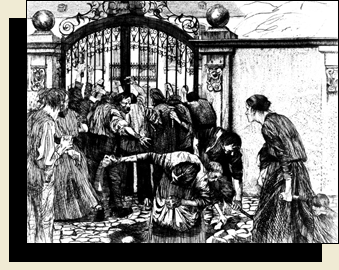


KÄTHE KOLLWITZ (1867-1945) was one of the most outstanding German women artists of the first half of the 20th Century. Drawings and lithographs are predominant in her work, but she also was a sculptor. For Kollwitz art was a means of social engagement. Her themes were predominantly the poor, the downtrodden and the forgotten. With her art she fought for social justice and against war. Not surprisingly, after Hitler's rise to power in 1933, she was expelled from the Academy that had accepted her in 1919 and conferred upon her the title professor. For the last twelve years of her life she was forbidden to exhibit her work. This exhibition concentrates on works executed between 1892 and 1921, and draws largely on a series in response to Gerhart Hauptmann's 1892 play The Weavers, which depicts a revolt by Silesian weavers in 1844. —Egon Verheyen, Clarence J. Robinson Professor of Humanities |
Exhibition Dates: Wednesday, December 3rd: |
